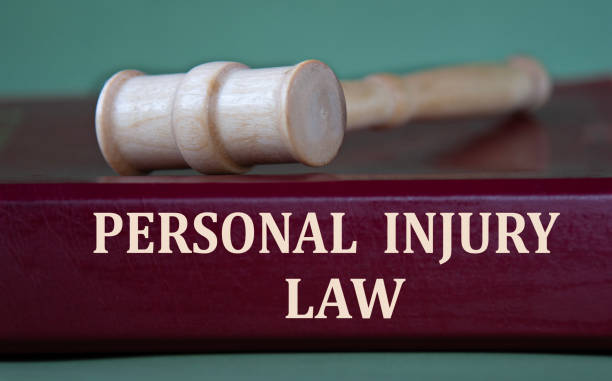What Compensation Can You Get in a Personal Injury Case? A Complete Guide
If you’ve been injured due to someone else’s negligence, compensation can help you cover medical bills, lost income, and emotional hardship. But what types of compensation are available in a personal injury case, and how are they determined? This guide breaks down the different categories of compensation, from medical expenses to pain and suffering, and explains the factors that influence your payout. Understanding these elements can empower you to pursue the recovery you deserve, though each case requires professional evaluation to estimate its true value.
Economic Compensation: Covering Tangible Losses
Economic compensation, also called compensatory damages, reimburses you for measurable financial losses caused by your injury. These damages aim to restore your financial stability and cover costs directly tied to the accident. Common types include:
- Medical Expenses: This covers hospital bills, surgeries, medications, physical therapy, and ongoing treatments. For example, a car accident victim might need months of rehabilitation, costing thousands of dollars.
- Lost Wages: If your injury prevents you from working, you can claim income lost during recovery. This includes missed salaries, bonuses, or freelance earnings.
- Future Care Costs: Severe injuries may require long-term care, such as in-home nursing or specialized equipment like wheelchairs. Compensation can account for these future expenses.
- Property Damage: If personal property (e.g., your car in a crash) was damaged, repair or replacement costs may be included.
Economic damages are calculated using receipts, pay stubs, and medical records. Accurate documentation is critical, as these losses form the foundation of most personal injury claims. For instance, a workplace injury might result in $50,000 in medical bills and $20,000 in lost income, which compensation would aim to recover.
Non-Economic Compensation: Addressing Intangible Harm
Non-economic compensation addresses losses that don’t have a clear dollar value but significantly impact your life. These damages recognize the emotional and personal toll of an injury. Key types include:
- Pain and Suffering: This compensates for physical discomfort and chronic pain caused by the injury. For example, a victim of a slip-and-fall accident might endure ongoing back pain, affecting daily activities.
- Emotional Distress: Injuries often lead to anxiety, depression, or PTSD. Compensation acknowledges the psychological impact, such as fear of driving after a car crash.
- Loss of Enjoyment of Life: If your injury prevents you from enjoying hobbies, family time, or social activities (e.g., a runner who can no longer compete), you may receive compensation.
- Loss of Consortium: This applies to the impact on relationships, such as reduced intimacy or companionship with a spouse due to your injuries.
Calculating non-economic damages is subjective, often based on the severity of the injury and its long-term effects. Courts or insurers may use multipliers (e.g., multiplying economic damages by 1.5-5) to estimate these amounts, depending on the case’s circumstances.
Factors That Influence Compensation Amounts
The amount of compensation you may receive depends on several factors, which vary by case and jurisdiction. Understanding these can help set realistic expectations:
- Severity of the Injury: More severe injuries, like traumatic brain injuries or permanent disabilities, typically lead to higher compensation due to greater medical costs and life impact.
- Strength of Evidence: Strong evidence, such as medical records, witness statements, or accident reports, supports a higher claim. Weak evidence may reduce payouts.
- State Laws: Compensation rules differ by state. For example, California’s comparative fault system may reduce your award if you share partial blame for the accident.
- Insurance Policy Limits: The at-fault party’s insurance coverage can cap your compensation, especially if they have minimal or no coverage.
- Economic Impact: Cases with significant financial losses (e.g., long-term unemployment) often yield higher economic damages.
These factors highlight why each case is unique. A minor fender-bender might result in a few thousand dollars, while a catastrophic injury could lead to millions, depending on the circumstances.
How Is Compensation Estimated?
Estimating compensation requires a thorough evaluation of your case, typically conducted by a legal professional. The process involves:
- Reviewing Evidence: Medical bills, pay stubs, and other records quantify economic losses. Doctor’s reports and personal testimony help assess non-economic damages.
- Consulting Experts: Medical or economic experts may project future costs, like ongoing care or lost earning capacity, especially in severe injury cases.
- Assessing Case Strength: Factors like liability (who’s at fault) and evidence quality influence the likelihood of a favorable outcome.
- Negotiating with Insurers: Insurers often propose initial settlements, which may be adjusted based on evidence and negotiations.
Because compensation depends on specific details, estimates vary widely. For example, a car accident victim with minor injuries might recover $10,000-$20,000, while a medical malpractice case could exceed $1 million. Professional analysis ensures all potential damages are considered.
Know Your Rights to Fair Compensation
Compensation in a personal injury case can help you recover financially and emotionally, but the amount and types depend on your unique situation. From medical bills to pain and suffering, understanding what’s possible empowers you to pursue your rights. Since every case is different, professional evaluation is key to determining what you may be owed. By learning about the compensation process, you’re better equipped to take the next steps toward justice and recovery after an injury.
